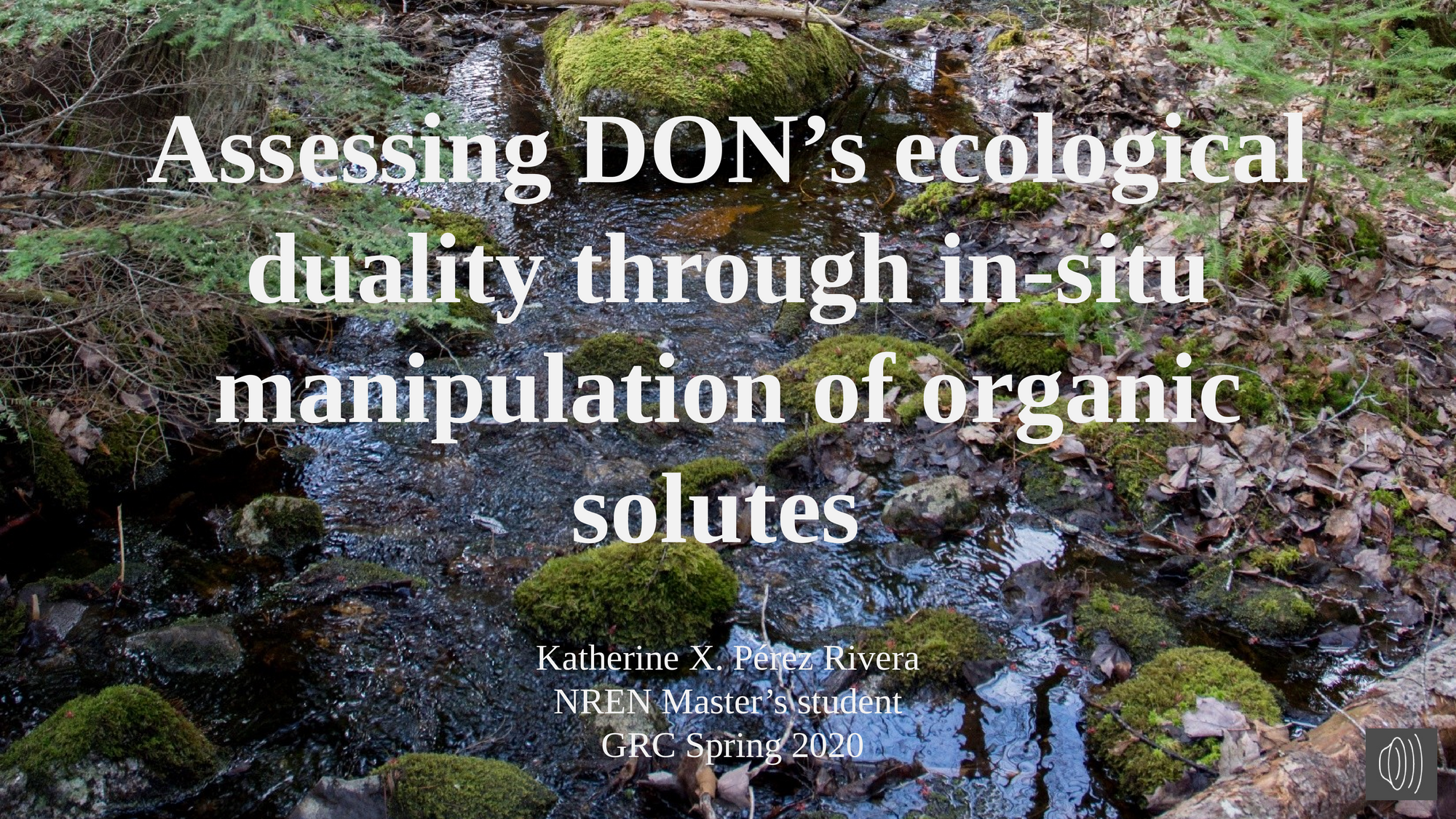Title:
Assessing DON’s ecological duality through in-situ manipulation of organic solutes
Slideshow Presentation
Best viewed by downloading
Preview Converted Images may contain errors

Abstract
Rivers and streams often serve as a major source of potable water. Inputs from the surrounding landscape (e.g. runoff, leaching from the soil, leaf matter, etc.) influence the chemistry of river and stream water as well as ecological processes within these aquatic ecosystems. An important but understudied aspect of river chemistry is the amount and composition of dissolved organic nitrogen (DON). DON affects water quality (e.g. eutrophication) and is quantitively a significant source of nitrogen in aquatic ecosystems. Previous work shows that DON in streams can be consumed or produced by microbial processes, but the factors that control spatial variability in DON concentrations are poorly understood. Because DON is made up of such a wide range of individual organic compounds (amino acids, proteins, nucleic acids, etc.), it is virtually impossible to predict its behavior and ecological significance by tracing the fate of a specific individual compound. Instead, the whole DON pool must be considered in any assessment of its reactivity. Understanding DON’s ecological and biogeochemical controls is critical to understand the role it plays within aquatic ecosystems.
Authors
| First Name |
Last Name |
|
Katherine
|
Pérez-Rivera
|
Leave a comment
Submission Details
Conference GRC
Event Graduate Research Conference
Department Natural Resources (GRC)
Group Oral Presentation
Added April 15, 2020, 3:37 p.m.
Updated April 15, 2020, 3:37 p.m.
See More Department Presentations Here